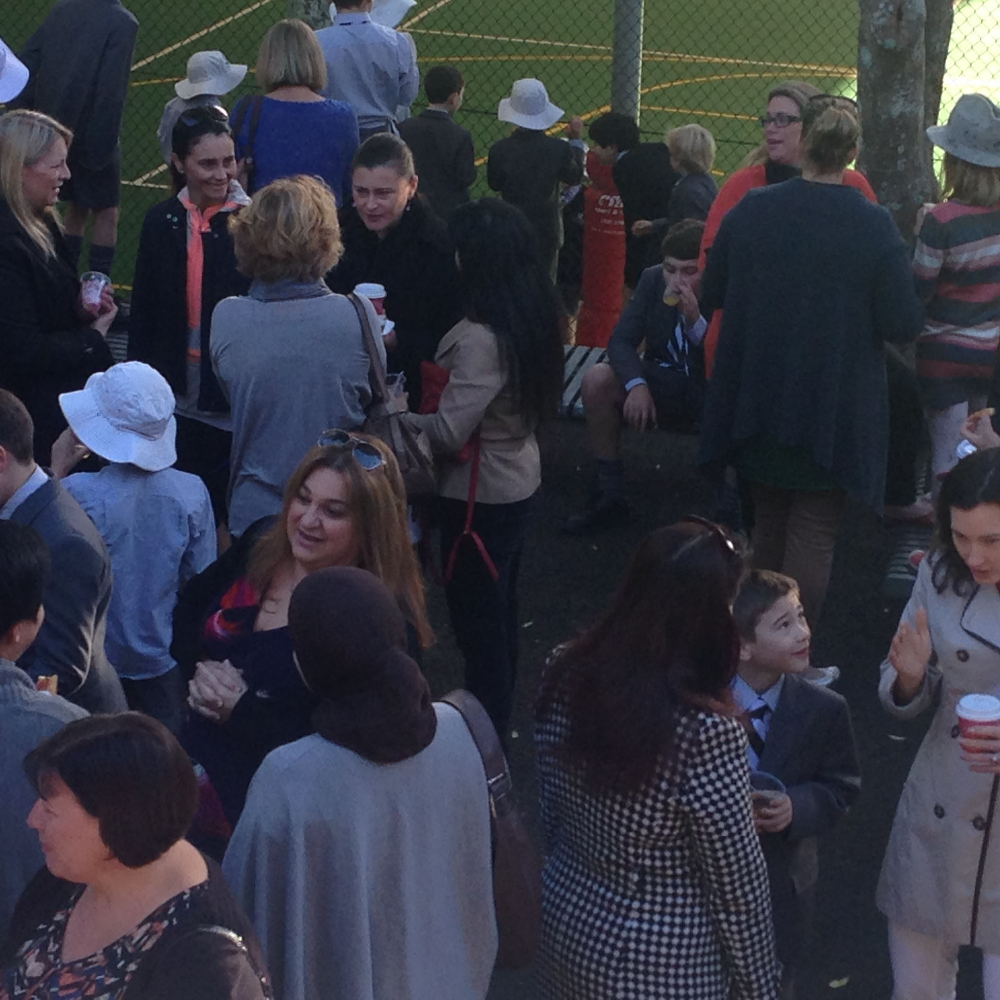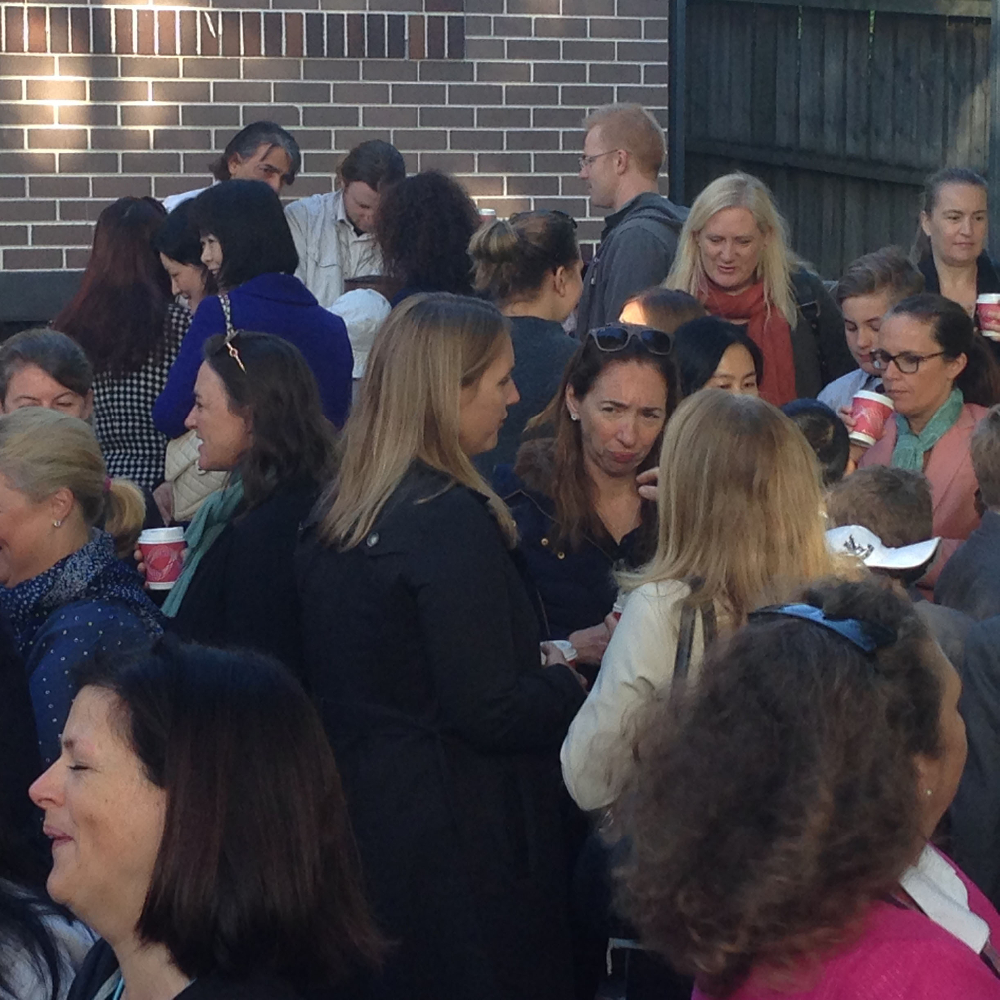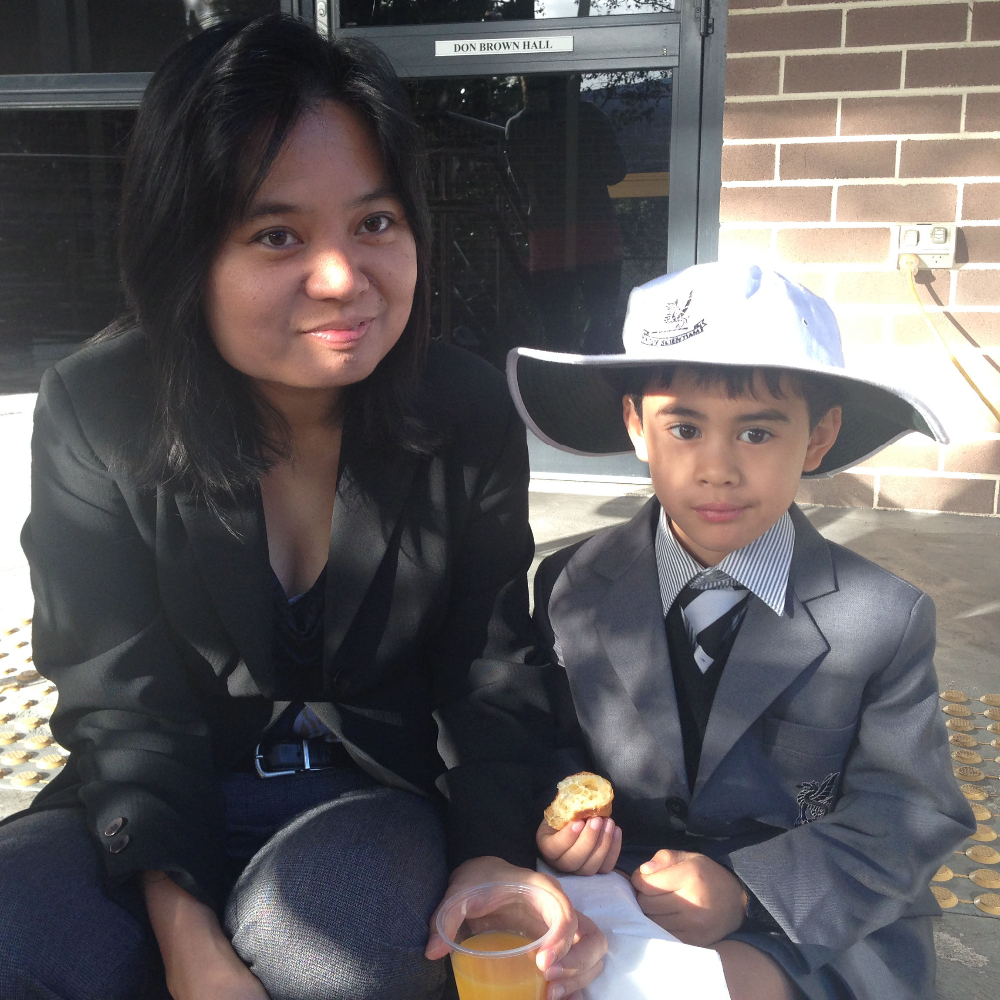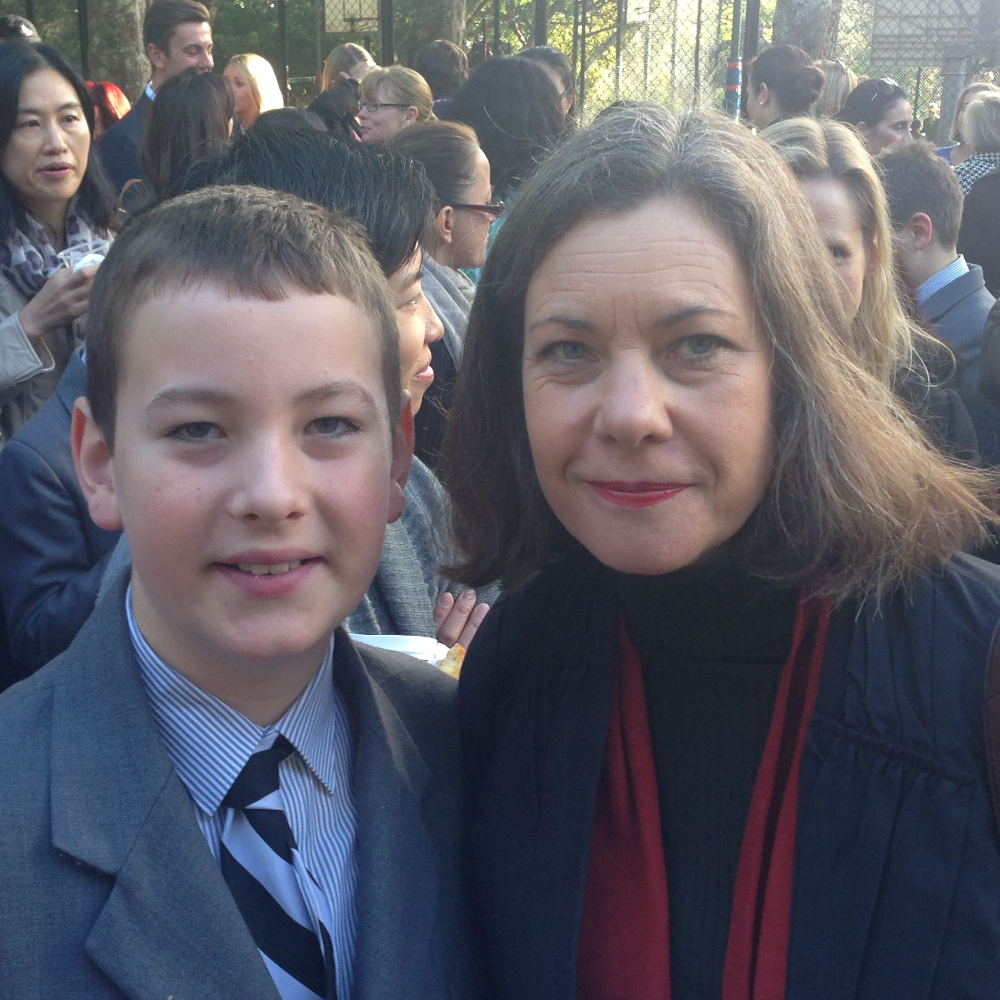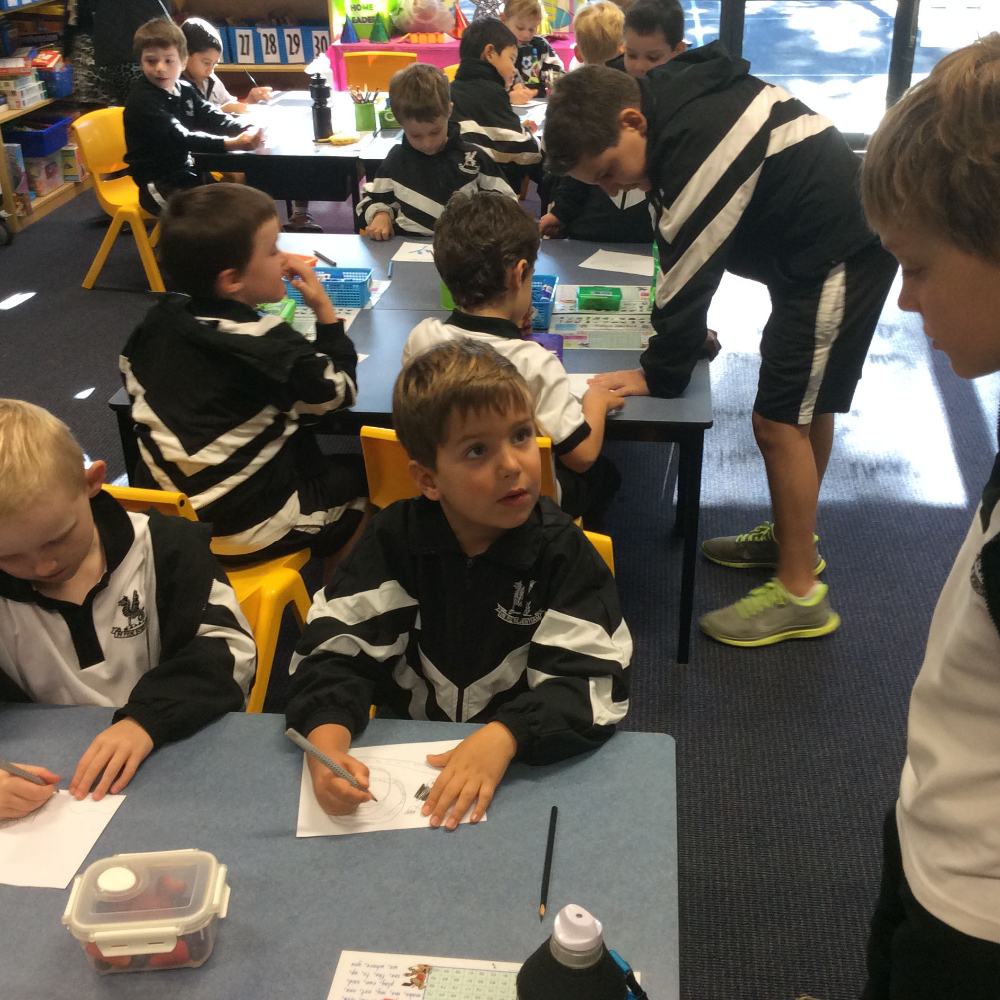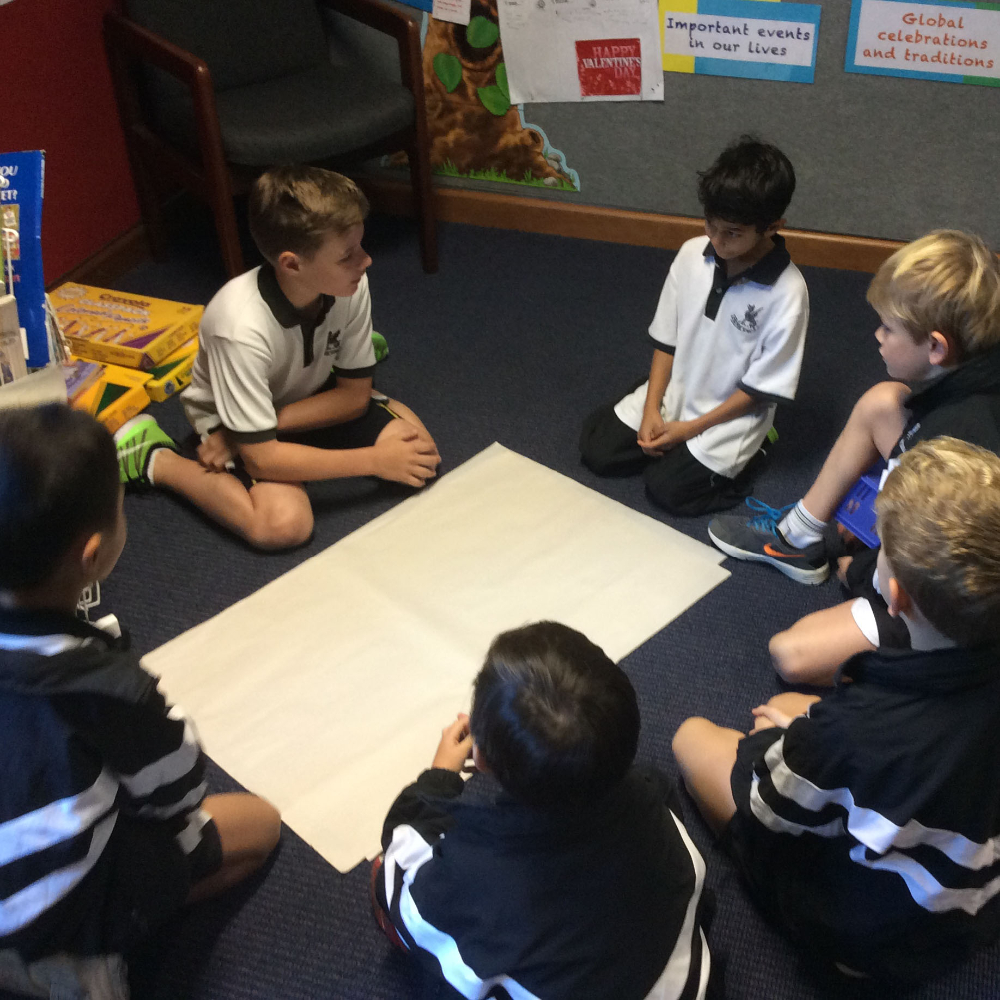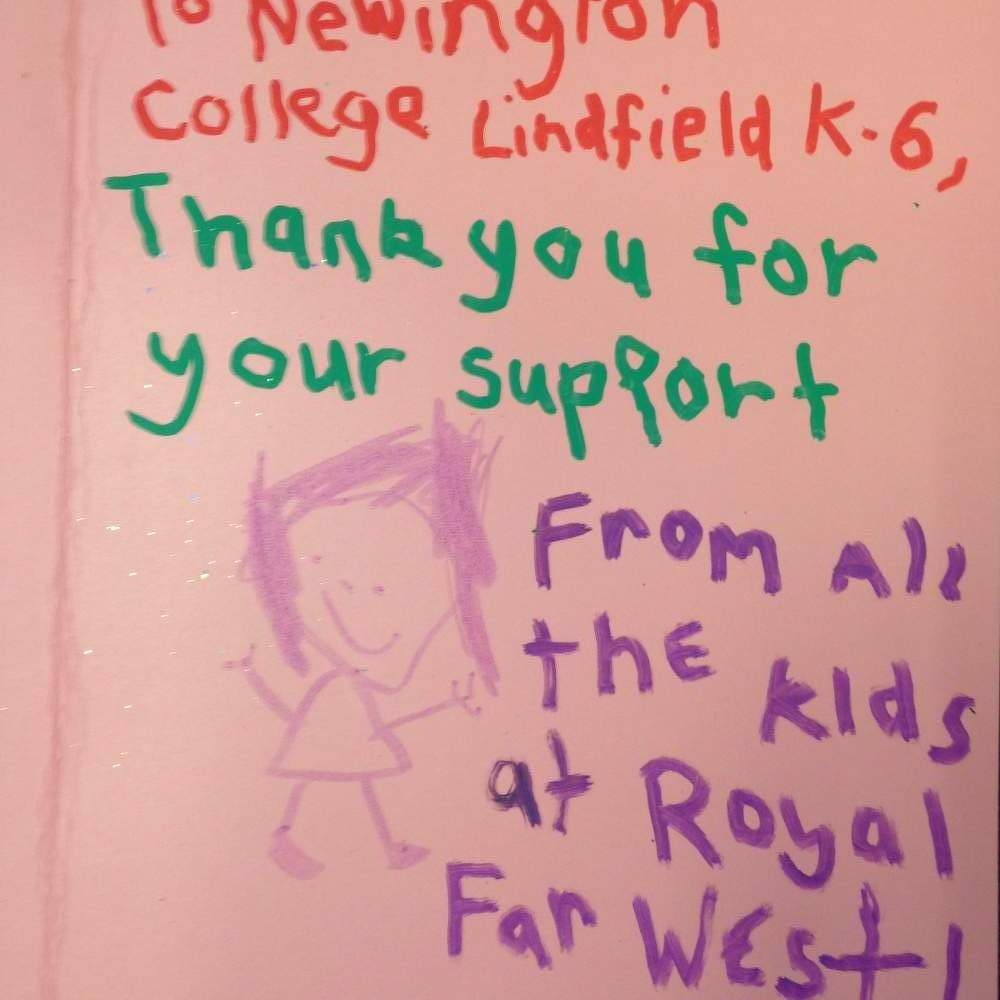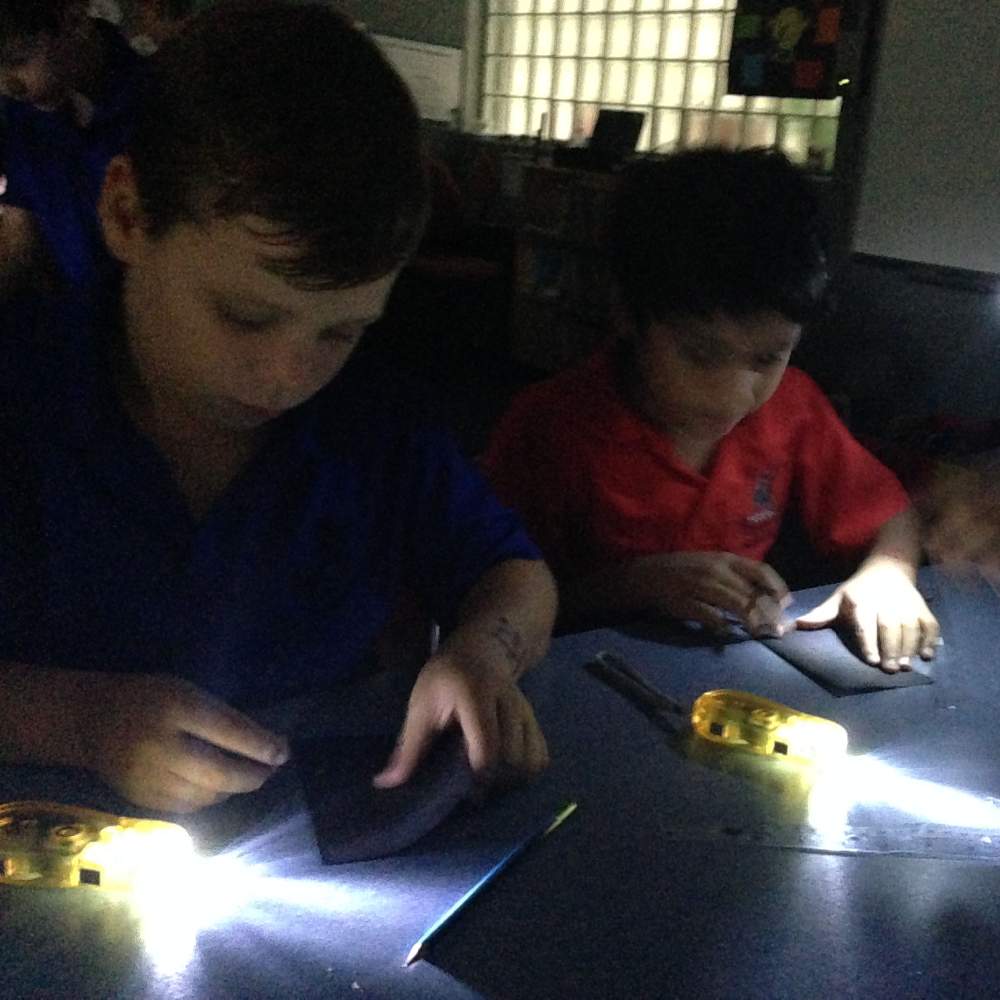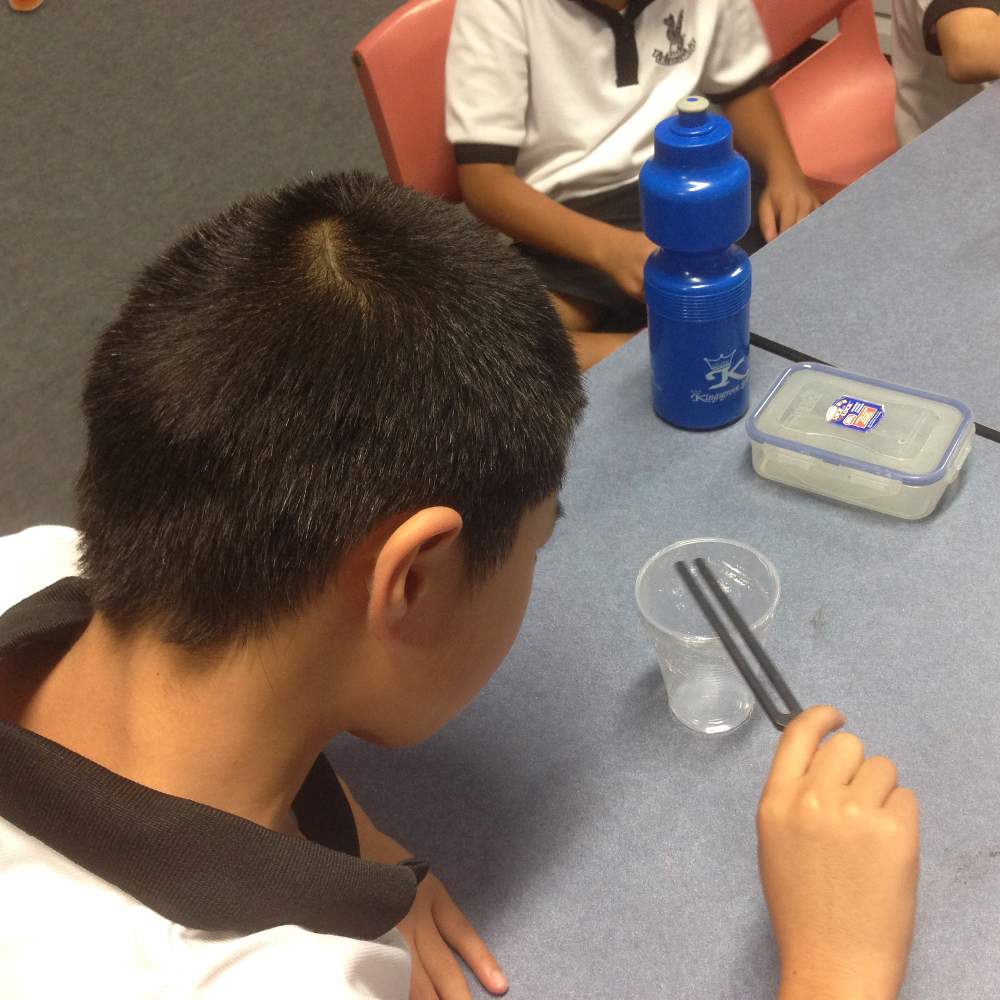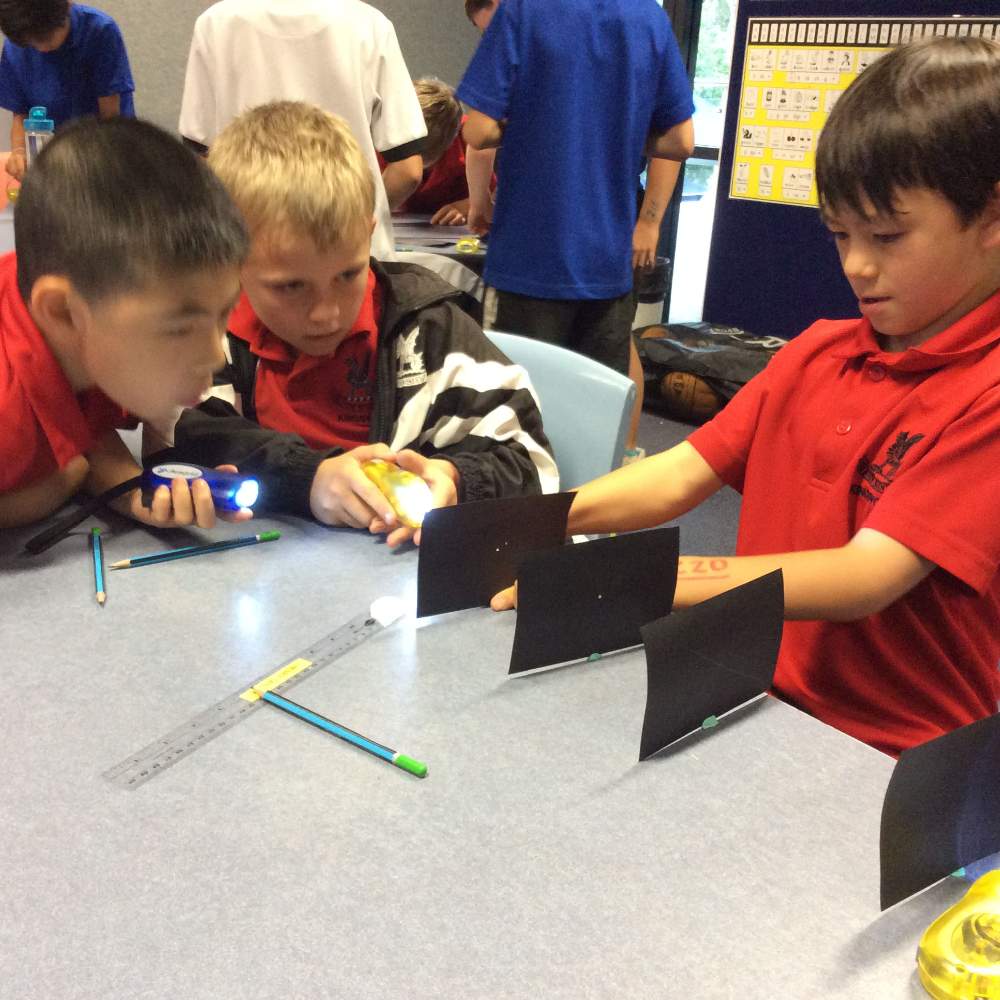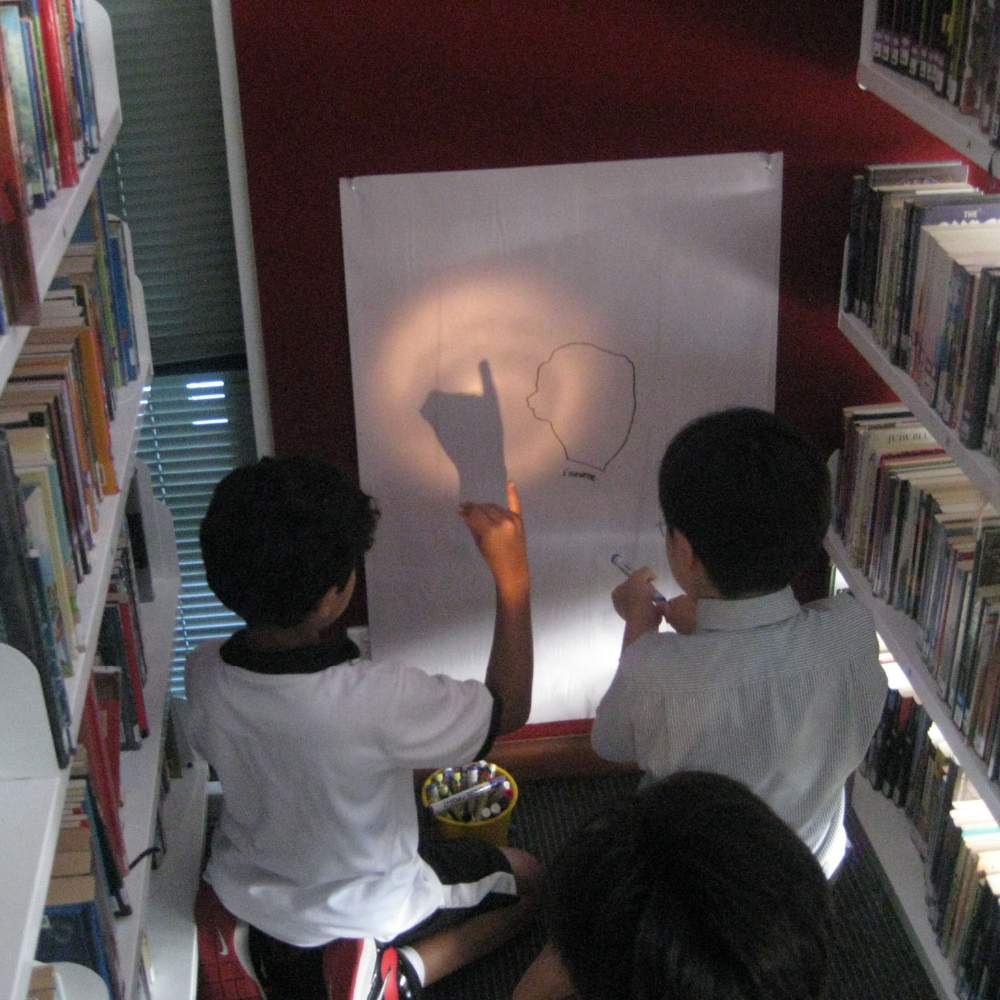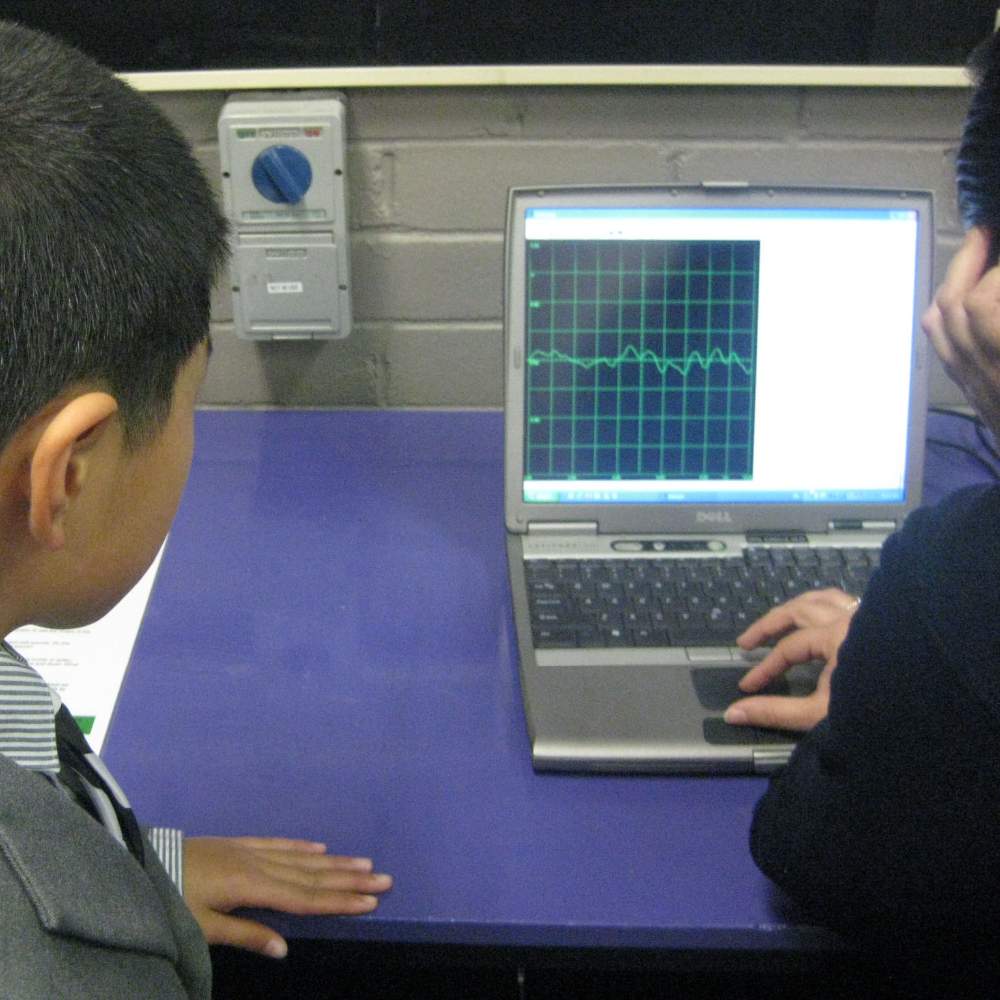Light and Sound – Year 4
– Why do our faces reflect perfectly in a mirror, yet we look like a Picasso masterpiece in aluminum foil?
– Is it possible to make salt dance?
– How do pregnant mothers see their babies using just sound?
– Why do seven colours of paint, mixed together make ‘brown’, yet seven colours of light, mixed together make ‘white’?
These are just some of the many questions we investigated during our Unit of Inquiry on Light and Sound. Every week, Year 4 were captivated by the amazing properties of light and sound and how these two elements are used to express ourselves and communicate with one another.
Through hands-on investigations, quality research, guest speakers and an excursion to the CSIRO, Year 4 have learned a lot about Light and Sound and the following are just some of the experiences that stood out to each of us.
A cool thing I learnt in this unit is that, white light is made up of all the colours of the rainbow and it shines through a raindrop. A raindrop acts as a prism and therefore reflects red, orange, yellow, green, blue, indigo and violet into the sky. A rainbow only occurs on a rainy and cloudy day because if it is a sunny day there are no raindrops for the light to be reflected. – Oliver
One thing I learnt was that if you shine light through a concave lens, the light will come in together. You will see a point. The point is called a focal point. When the light goes across each other, it looks sort of like a star. If you shine light through a convex lens, the light spreads out. There is no focal point. – Ryoma
A really cool fact I learnt in this unit was how rainbows are formed. Raindrops can actually act as a prism. When the raindrops drop at different angles, they reflect white light from the sun. White light is made up of red, orange, yellow, green, blue, indigo and violet. – Tom K
One thing I learned was that sound can be modified. We did this by making a Paper Banger. The bigger the paper you made it out of, the louder the sound. The smaller the paper, the quieter it would be. But if the paper was thick and big it would not work as well as the normal paper. – Shea
We learnt that sound travels in vibrations. I know that because we made instruments. My instrument was a drum, when I hit the drum the vibrations go inside the drum and come back out to make the sound. – Henry
I learnt that some lights are natural and some are artificial. Some natural lights are stars, fireflies and the sun. Some artificial lights are T.V, fish tank and car lights. I learnt this by investigating the environment around me. – Angus B
A really epic fact I learnt this unit was that light reflects off smooth, shiny, flat surfaces which makes a regular reflected pattern. I found out by looking through a mirror and a regular reflected pattern reflected into my eyes. But when I looked through foil, I saw a diffused reflection pattern reflecting into my eyes because the surface was bumpy. – Tom K
Our class did an investigation on rainbows and I learnt how rainbows really form. They form when sunlight hits raindrops at certain angles. The colours of the spectrum slow down at different speeds and one colour emerges. Different raindrops form all the other colours and they all emerge together to make a rainbow. – Connor P
One thing I learnt during this unit of inquiry is that sound can be modified. We learnt this when we met channel 9 sound specialist, Mick Glennon. He showed us a selection of microphone covers called “fluffy dogs” which were used in different weather conditions. He then played us a variety of strange sound effects and showed us how he could change the pitch by doing some fancy work on his computer. – Anton
One thing I learned was that light closes in when it hits a convex lens. I also learned that light spreads out when it hits a concave lens. I learned this at school by doing an experiment with concave and convex lenses and a torch. We shone the torch at both lenses and the experiment worked! – Cameron
Did you know that a second rainbow can form if white light hits a raindrop at a specific angle? The second rainbow will appear behind the main rainbow. The rainbow will be bigger but the colours will be fainter. I learnt this by investigating websites and videos on our iPads. – Nathan
One thing that I learnt was that light travels in straight lines. I also learnt that when light hits a concave lens, the lines of light spread out. When light hits a convex lens the lines of light go in. In class we did an activity on concave and convex lenses to see where to put the lenses and where the lines of light go. – Eddie
In our awesome UOI, one of the things that we did was have an audio guy come in from Channel 9 and his name was Mick. He told us a lot about sound and movies and I learnt so much. One of the things that I learnt was when a door closes in a movie, people like Mick have sound tricks that make the sound of a door closing and put it in the movie. I had a great time. – Jack M
I learnt that sound can be modified by making your voice soft or loud. It will also echo if you move into an open space. I learnt this by going into an open space and shouting as loud as I could!!! Sound can be modified for instruments as well. Guitars are one of them. Pluck the string & it will make a long sound. The string will vibrate if you touch the string. Depending on the thickness of the string, the higher or lower the string will sound. – Amedeou
Did you know that sound vibrates? In class we made an instrument. I made a Persian violin, this instrument was about a metre long. My instrument used fishing wire, a cardboard tube, tuna or a dog food can and a 4 cm block of wood. The fishing wire vibrated down though the cardboard tube and out the end. The sound made a higher pitch when you moved the block of wood. – Gus
One thing I learnt was that light travels in straight lines. I learnt this by doing an experiment with convex and concave lenses. If you shine light at a convex lens it makes the light join together and makes a focal point, which is called converging. If you shine light at a concave lens it spreads out and this is called diverging. – Laksh
One thing I learned in this light & sound unit was that sound travels in waves and it vibrates. Firstly, we got a tuning fork, some sodium chloride & a cup. We bashed the tuning forking on our shoes and it vibrated. Then we put it on the glad wrap that was stretched over the cup. This made the salt dance and showed how sound vibrates. This unit of inquiry was so fun! – Jack B
I learnt that sound travels in waves. We did an activity that was putting your ear up against a metal railing. The person on the other side could hear a bang. The metal railing vibrates showing that sound can also travel through solid objects. – Tom H
Did you know that you can manipulate sound by making paper bangers. You can do this by using different types of paper; using big paper, small paper, cardboard and more. The sound is made when you flick your wrist and the air is trapped. The air pushes the paper open and the sound vibrates in the paper, you can actually feel the vibrations! – Charlie
A really cool thing I learnt during our unit of inquiry was that lenses can refract light to make light converge and diverge. Concave lenses make light diverge. Convex lenses make light converge and it makes a focal point. If the lens is wider, the focal point could be 2km away. The thinner the lens is, the slower the light will diverge. I learnt this in an activity we did with light bulbs and lenses. – Lachlan
One awesome thing from our unit of inquiry that I learnt was that sound travels in waves. I learnt this by pouring salt onto a cup. I then used a tuning fork and put it near the salt. The sound waves and vibrations made the salt dance! – Connor E
One of the things I learnt in our unit of inquiry is that sound travels in waves. We proved that fact by using the following: a paper cup, a piece of glad wrap, sodium chloride and a tuning fork. Sounds weird doesn’t it? I put some glad wrap over the paper cup and put a pinch of sodium chloride on the glad wrap. Then I got the tuning fork and hit it against my shoe, then I put the tuning fork on the cup and the sodium chloride danced! The reason is because sodium chloride is lighter than sound waves, when you hit the tuning fork on your shoe, it creates sound waves. When you put the tuning fork on the glad wrap, the glad wrap vibrates and the sodium chloride moves. – Owen
One thing that I learnt about light and sound is that sounds can be modified. I learnt this by going on an app called Garage Band. On Garage Band we could record our voices and then change the pitch and volume of the recordings. This proved that sound can be modified. – Caleb
This unit of inquiry I learnt that light travels in straight lines. We proved this by getting four pieces of black cardboard and putting holes in the centre of just three. On the last one we drew a bullseye then we lined them up. We shone the torch in the hole and it hit bullseye. We also learnt that light bends in water. We proved this by getting a water bottle and filling it up half way, then we put the straw in and saw that it did not match up. – James
A cool thing I learnt was when we made sodium chloride dance. What we did was get a cup, cling wrap and some salt. We put the cling wrap tightly on top of a cup and then put a pinch of sodium chloride on top. We got a tuning fork and wacked it on our shoe and held it above the cling wrap, this made the salt dance. The reason why this happened was because the vibrations made the salt move and dance. – Ollie
One thing I learnt in sound was that sound vibrates and travels through solid objects, especially through timber. I learnt this while making an instrument; it was called a Parayazmic (invented and made by me with some help from my Dad). I know that wood vibrates (and timber is wood) so I used timber. Did you know timber makes the sound a tad louder? – Parsa
Did you know that sound can travel through solid objects and it can be modified? I learnt this by getting a metal ruler and hitting it against a metal railing. When I put my ear against the railing and then hit the metal, I could hear the sound very clearly. The harder I hit the railing, the louder the sound. – Jett
I learnt that light travels in straight lines and this is how: I punched holes in 3 black cards and lined them up with bluetac. Then I put one more black card on the end without a hole, instead I drew a target on it. Last I shined a torch through the holes and saw the light rays. – Benjamin
It was very rewarding to watch the boys articulate their level of understanding during our excursion to the CSIRO excursion. This day really culminated our learning experience and left the boys with a lasting impression on the importance of light and sound in their lives.
I am very proud of all the boys and their efforts during this unit of inquiry and I am looking forward to the next lot of questions we will inquire into throughout the term.
Shayne Pollard – Year 4 Class Teacher






